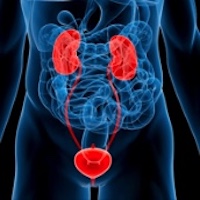Non-invasive evaluation of obstruction after ureteroscopic stone removal: Role of renal resistive index assessment

Accepted: June 20, 2020
All claims expressed in this article are solely those of the authors and do not necessarily represent those of their affiliated organizations, or those of the publisher, the editors and the reviewers. Any product that may be evaluated in this article or claim that may be made by its manufacturer is not guaranteed or endorsed by the publisher.
Authors
Objectives: The aim of this study is to evaluate prediction of postoperative ureteral obstruction needing ureteral stent insertion by evaluating the resistive index (RI) values and the grade of hydronephrosis.
Material and Methods: A total of 66 adult patients undergoing stentless endoscopic ureteral stone treatment (URS) between January 2018 and January 2019 were included in this prospective study. Preoperative patient and stone characteristics were noted. All patients were evaluated with renal Doppler ultrasonography study to assess degree of hydronephrosis and RI values. A renal Doppler ultrasonography was repeated at postoperative 1st, 3rd and 7th days. Changes in both RI and hydronephrosis levels before and after the procedures were noted. On the postoperative 7th day, patients were divided into two groups including obstructive and non-obstructive cases according to RI values assessed where a RI value of 0.7 was accepted as the cut-off for obstruction. The preoperative and perioperative characteristics of both groups were evaluated in a comparative manner.
Results: The mean patient age was 43.6 ± 1.72 years. Significant improvements were noted in RI and grade of hydronephrosis after the operation. The grade of hydronephrosis and RI values were found to improve more significantly on postoperative 3rd day when compared to the postoperative 7th day (p < 0.01 and p < 0.01). A significant correlation was detected between the grade of hydronephrosis (>grade 2) and obstructive RI values (> 0.7) in each postoperative visits (p: 0.001). RI values (> 0.7) at postoperative seventh days were correlated with larger mean stone size, increased ureteral wall thickness, increased diameter of the ureter proximal to the stone, and longer duration of the operation. Preoperative high-grade hydronephrosis indicated obstructive RI values at postoperative seventh day (p = 0.001)
Conclusion: Changes in RI values on Doppler sonography and the grade of hydronephrosis may be a guiding parameter in assessing postoperative ureteral obstruction.
How to Cite
PAGEPress has chosen to apply the Creative Commons Attribution NonCommercial 4.0 International License (CC BY-NC 4.0) to all manuscripts to be published.

 https://doi.org/10.4081/aiua.2020.3.244
https://doi.org/10.4081/aiua.2020.3.244



